Today Current Affairs: 24th May 2022 for UPSC IAS exams, State PSC exams, SSC CGL, State SSC, RRB, Railways, Banking Exam & IBPS, etc
Table of Contents
Maya’s Pit Viper : Green Snake
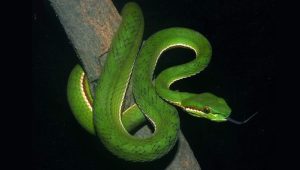
A new venomous green snake named Trimeresurus mayaae or Maya’s Pit viper was discovered from Umroi Military station in Ri-Bhoi district of Meghalaya.
About Maya’s Pit viper:
- The snake measures about 750 mm in length
- It looked very similar to Pope’s Pit Viper but the colour of the eyes was different.
- This snake and the Pope’s Pit Viper have very different hemepenis, the copulatory organ.
- According to a herpetologist, this new species was relatively common in Meghalaya, Mizoram and even in Guwahati.
About Pit Viper
- Pit viper, any species of viper (subfamily Crotalinae) that has, in addition to two movable fangs, a heat-sensitive pit organ between each eye and nostril which together help it accurately aim its strike at its warm-blooded prey.
- Pit vipers are found from deserts to rainforests.
- They may be terrestrial, arboreal, or aquatic. Some species lay eggs; others produce live young.
- The venomous pit vipers species includes hump-nosed pit viper, Mangrove pit viper and Malabar Pit Viper.
- Russell’s Viper and Saw-scaled Viper are two most venomous vipers species found in India and member of big four poisonous and deadliest snakes in India.
- These snake species are responsible for the majority of snake bites in India.
7th Annual Meeting Of NDB:
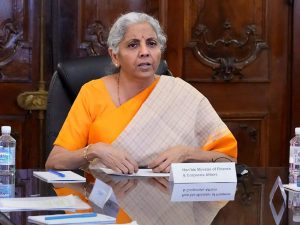
The Union Minister of Finance & Corporate Affairs and India’s Governor for the New Development Bank (NDB) chaired the 7th Annual Meeting of Board of Governors of NDB (New Development Bank).
- The meeting was also attended by Governors/Alternate Governors of Brazil, China, Russia, South Africa and the newly joined members Bangladesh and United Arab Emirates (UAE).
- Theme for the Annual Meeting was “NDB: Optimising Development Impact”.
Highlights of the Meeting:
- The Finance Minister (FM) underscored the importance of multilateralism and the spirit of global cooperation for economic recovery.
- In this regard FM acknowledged that the NDB has successfully established itself as a reliable development partner for Emerging Market Economies.
- Highlighting that India is celebrating 75 years of Independence this year, the Union Finance Minister mentioned that India’s economic growth in the current financial year has been robust and is estimated to be 8.9 % which is the highest among all large economies.
- This reflects India’s strong resilience and speedy recovery.
- The FM expressed confidence that India will continue to achieve a high growth rate in the current and next financial year.
New Development Bank:
- It is a multilateral development bank jointly founded by the BRICS countries (Brazil, Russia, India, China and South Africa) at the 6th BRICS Summit in Fortaleza, Brazil in 2014.
- It was formed to support infrastructure and sustainable development efforts in BRICS and other underserved, emerging economies for faster development through innovation and cutting-edge technology.
- It is headquartered at Shanghai, China.
Re-constitution Of The Central Advisory Board on Archaeology (CABA):
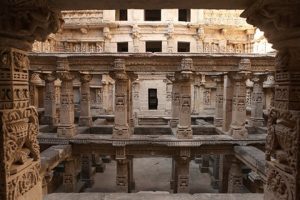
The Government has re-constituted the Central Advisory Board on Archaeology (CABA).
- CABA has been constituted to strengthen contacts between the Archaeological Survey of India (ASI) and those in the field of archaeological research.
- The board will include “five persons nominated in their personal capacities by the Government of India” and former Director-Generals of ASI.
- The board will meet once a year and its functions would include advising the Centre on “matters relating to archaeology” referred to by its members.
- It will promote closer contacts of the Archaeological Survey of India with Indian Universities conducting Archaeological Research.
- It will promote the studies related to application of archaeological principles, training future Archaeologists, and closer association of learned societies in India and of the State Governments with the activities of the ASI.
Archaeological Survey of India:
- Archaeological Survey of India (ASI), under the Ministry of Culture, is the premier organization for the archaeological research and protection of the cultural heritage of the nation.
- It administers more than 3650 ancient monuments, archaeological sites and remains of national importance.
- Its activities include carrying out surveys of antiquarian remains, exploration and excavation of archaeological sites, conservation and maintenance of protected monuments etc.
- It was founded in 1861 by Alexander Cunningham- the first Director-General of ASI. Alexander Cunningham is also known as the “Father of Indian Archaeology”.
Raja Ram Mohan Roy 250th Birth Anniversary:
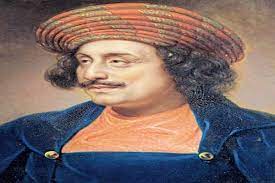
The Ministry of Culture has organized an inaugural Ceremony to commemorate Raja Ram Mohan Roy on his 250th Birth Anniversary.
- The inaugural ceremony was organized at the Raja Ram Mohan Roy Library Foundation, Salt Lake, Kolkata, and at Science City Auditorium, Kolkata.
- It is an year long celebration which will continue till next 22nd May.
- It was the 250th birth anniversary of Raja Ram Mohan Roy and the 50th foundation day of the Raja Ram Mohan Roy Library Foundation.
- The Ministry of Culture has inaugurated an Iconic Statue of Raja Ram Mohan Roy at the Raja Ram Mohan Roy Library Foundation.
Raja Ram Mohan Roy:
- Raja Ram Mohan Roy was the father of Modern India’s Renaissance and a tireless social reformer who inaugurated the age of enlightenment and liberal reformist modernisation in India.
- Raja Ram Mohan Roy was born on 22nd May 1772 in Bengal. His early education included the study of Persian and Arabic at Patna where he read the Quran, the works of Sufi mystic poets and the Arabic translation of the works of Plato and Aristotle.
- Ram Mohan Roy was given the title of ‘Raja’ by the titular Mughal Emperor of Delhi, Akbar II whose grievances the former was to present before the British king.
- In his address, entitled ‘Inaugurator of the Modern Age in India,’ Tagore referred to Ram Mohan as ‘a luminous star in the firmament of Indian history’.
- Raja Ram Mohan Roy’s first published work Tuhfat-ul-Muwahhiddin (a gift to deists) published in 1803 exposed irrational religious beliefs and corrupt practices of the Hindus as the belief in revelations, prophets, miracles etc.
- In 1814, he founded Atmiya Sabha in Calcutta to campaign against idolatry, caste rigidities, meaningless rituals and other social ills.
- He founded the Atmiya Sabha in 1815, the Calcutta Unitarian Association in 1821, and the Brahmo Sabha in 1828 which later became the Brahmo Samaj.
- He attacked child marriage, illiteracy of women and the degraded state of widows and demanded the right of inheritance and property for women.
- Roy did much to disseminate the benefits of modern education to his countrymen.
- He supported David Hare’s efforts to find the Hindu College in 1817, while Roy’s English school taught mechanics and Voltaire’s philosophy.
- In 1825, he established Vedanta college where courses in both Indian learning and Western social and physical sciences were offered.
13th Annual Day Commemoration Of The Competition Commission Of India (CCI):

Finance Minister participated in the 13th Annual Day commemoration of the Competition Commission of India (CCI).
- Finance Minister also inaugurated the regional office at Kolkata and launched an upgraded website of CCI.
- Competition Commission of India (CCI) is a statutory body of the Government of India responsible for enforcing the Competition Act, 2002, it was duly constituted in March 2009.
- The Monopolies and Restrictive Trade Practices Act, 1969 (MRTP Act) was repealed and replaced by the Competition Act, 2002, on the recommendations of the Raghavan committee.
- The Commission consists of one Chairperson and six Members who shall be appointed by the Central Government.
- The commission is a quasi-judicial body which gives opinions to statutory authorities and also deals with other cases.
- The Chairperson and other Members shall be whole-time Members.
- The Chairperson and every other Member shall be a person of ability, integrity and standing and who, has been, or is qualified to be a judge of a High Court, or, has special knowledge of, and professional experience of not less than fifteen years in international trade, economics, business, commerce, law, finance, accountancy, management, industry, public affairs, administration or in any other matter which, in the opinion of the Central Government, may be useful to the Commission.
Biological Research Regulatory Approval Portal (BioRRAP):
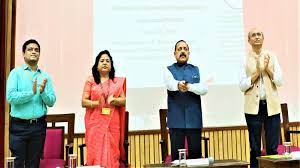
In keeping with the spirit of “One Nation, One Portal”, the Union Minister recently launched a Single National Portal for Biotech researchers and Start-ups, i.e., Biological Research Regulatory Approval Portal (BioRRAP).
- Biotechnology has fast emerged as an academic and livelihood avenue for youngsters in India.
- The portal will serve as a gateway and will help researchers to see the stage of approval of their applications for regulatory clearances and to see preliminary information on all the research work being undertaken by the particular researcher and/or organization.
- This portal will strengthen interdepartmental synergies and bring accountability, transparency, and efficacy in the functioning of agencies regulating various aspects of biological research and issuing permission.
- To provide more credibility and recognition to such biological research, the Government has developed a web system under which each research, requiring regulatory oversight, will be identified by a unique ID called “BioRRAP ID”.
- Using this BioRRAP Id, a further submission process to respective regulatory agencies has to be initiated based on the research application.
- This unique portal of DBT (Direct Benefit Transfer) is a step towards Ease of Doing Science and Scientific research and Ease of Start-ups in the Country.
- There is also a need to link the applications submitted to various regulatory agencies for approval so that the status of the application may be seen in one place.
- This portal will not only help in understanding scientific strength and expertise but also in the formulation of enabling policies to garner the fruits of scientific research.
Sangita Kalanidhi Award 2020, 2021 And 2022:

The Music Academy announced Sangita Kalanidhi award winners for the years 2020, 2021 and 2022.
Madras Music Academy (MMA):
- It plays an important role in promoting the Carnatic Music.
- A music conference was held along with All India Congress Session held in Madras in 1927and during the deliberations, the idea of a Music Academy emerged. Next year MMA was Inaugurated.
- Thus it’s an offshoot of INC madras session, 1927.
- It presents the following annual awards:
- Sangeetha Kalanidhi: Awarded to one person who has contributed to the field of Carnatic music. Considered as the highest accolade in the field of Carnatic music; Since 2005, the Sangeetha Kalanidhi also receives the MS Subbulakshmi Award instituted by The Hindu.
- Sangeetha Kala Acharya: Awarded to two senior musicians who have contributed by bringing several disciples to the concert platform.
- Natya Kala Acharya: Awarded to a senior dancer at the inauguration of the annual dance festival.
- TTK Award: Awarded to two senior musicians who have made a mark in the music field as icons and gurus. It is named after TT Krishnamachari, former Union Minister and industrialist, who was a great patron of the arts and was Vice-President of the Music Academy.
- Papa KS Venkataramiah award: Awarded to a Violinist of merit; This award is named after Papa KS Venkataramiah (a great violinist of the past).
- Musicologist Award: Awarded to a musicologist; A scholar who participates in musical research is a musicologist.
Indira Sivasailam endowment concert and medal: Awarded during Navaratri each year, it is given to the top-ranking performing artist in the concert organized at that time.
Ramban Tunnel:
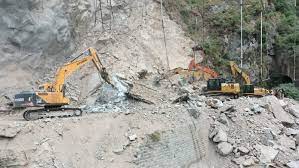
The Centre has constituted a committee of three independent experts to investigate the reasons for the recent collapse of a part of an under-construction tunnel in Ramban on Jammu-Srinagar highway and suggest remedial measures.
- According to the Ministry of Road Transport and Highways office order, Professor J.T. Sahu of the IIT, Delhi will be the chairman of the committee, and it will submit the report within 10 days.
- The stretch between Digdole and Khooni Nallah of the Ramban Banihal section is prone to frequent landslip and shooting stones due to fragile geology.
- The Twin tube Tunnel work in 4-laning from Digdole to Panthyal on Jammu Srinagar Highway was awarded to M/s Ceigall India Limited in JV with Patel Engineering Limited. The construction work started on 1st February 2022.
AstroSat: Witnessed The Birth Of a Black Hole In Space For The 500th Time

India’s Astrosat space telescope has witnessed the birth of a black hole in space for the 500th time.
- A black hole is a place in space where gravity is so strong that even light cannot escape its pull.
- A black hole is a place in space where gravity is so strong that even light cannot escape its pull.
- According to Nasa, the gravity in black holes is so strong because matter has been squeezed into a tiny space. This can happen when a star is dying.
- AstroSat is India’s first multi-wavelength space telescope, which has five telescopes seeing through different wavelengths simultaneously — visible, near UV, far UV, soft X-ray and hard X-ray.
- Onboard the AstroSat is a 38-cm wide UltraViolet Imaging Telescope (UVIT), which is capable of imaging in far and near-ultraviolet bands over a wide field of view.
- AstroSat was launched on 28 September 2015 by ISRO into a near-Earth equatorial orbit.
- It is a multi-institute collaborative project, involving IUCAA, ISRO, Tata Institute of Fundamental Research (Mumbai), Indian Institute of Astrophysics (Bengaluru), and Physical Research Laboratory (Ahmedabad), among others.
- It has been studying Gamma-Ray Bursts (GRB).
- GRBs are immensely energetic explosions that have been observed in distant galaxies.
- They are the brightest and most energetic electromagnetic events known to occur in the universe.
- GRBs shine hundreds of times brighter than a typical supernova and about a million trillion times as bright as the Sun.




